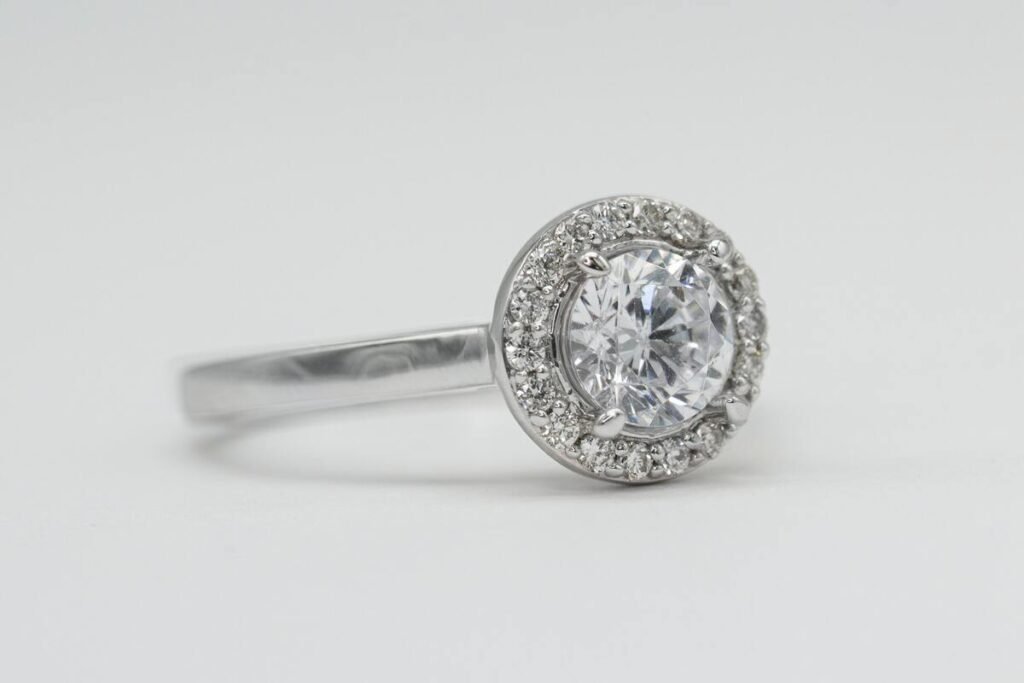The brillance of a flawless can be so startlingly vivid when put side-by-side with a low-level or even a mid-priced variant. For jewelry enthusiasts who have an eye for the pieces they wear, the difference may be enough for the extra zeroes added to the ring’s price.
Diamond colors—pertaining to the grade of a colorless diamond—may be one of the criteria that you or your partner may be looking for in a ring. Before you splurge on the flawless option, understand the system of diamond grading, and see what other factors can affect your purchase.
Understanding the Diamond Grade
There’s such a thing as a color grade for diamonds. This is used to differentiate the amount of flawlessness or colorlessness or the amount of inclusions and tints that a diamond may have.
Some jewelry enthusiasts prefer to classify diamonds using the diamond color code, whereas others would identify them by the actual classification names. It’s good to understand what exactly each one pertains to, so you know what to expect when checking out diamond rings.
The diamond color code
Diamonds are classified against a color scale. There’s an assigned grade that typifies a specific color of the diamond.
These grades will highly affect how much a diamond costs. In some cases, they can be even referred to as the diamond clarity chart. This grading system takes into consideration the inclusions and tints that can affect the diamond’s overall color that is visible to the eye.
Nearly colorless: D, E, and F
The highest would be the colorless grade, which includes three specific grades, D, E, and F. Each one is colorless to nearly colorless. When asking, “Which grade is best?” know that this should be quantified further.
If you are looking for the best color code with fewest inclusions and flaws, then any of these three will be a good choice. Grade D to F does not have a color that’s visible to the naked eye or even under intense magnification.
Nearly colorless: G, H, I, and J
For more affordable diamonds that can still pass off as almost colorless, the four grades G, H, I, and J will be your best bet.
For one thing, the color or tint for these grades can either be very faint or nearly invisible to the naked eye. The diamond color H-I is still fairly colorless, but if one looks at the diamond under magnification, there may be a faint yellow tinge.
Still, if you ask, “is an I color diamond OK?” the answer may still be yes, but mostly if you avoid putting it side-by-side with a higher grade level diamond.
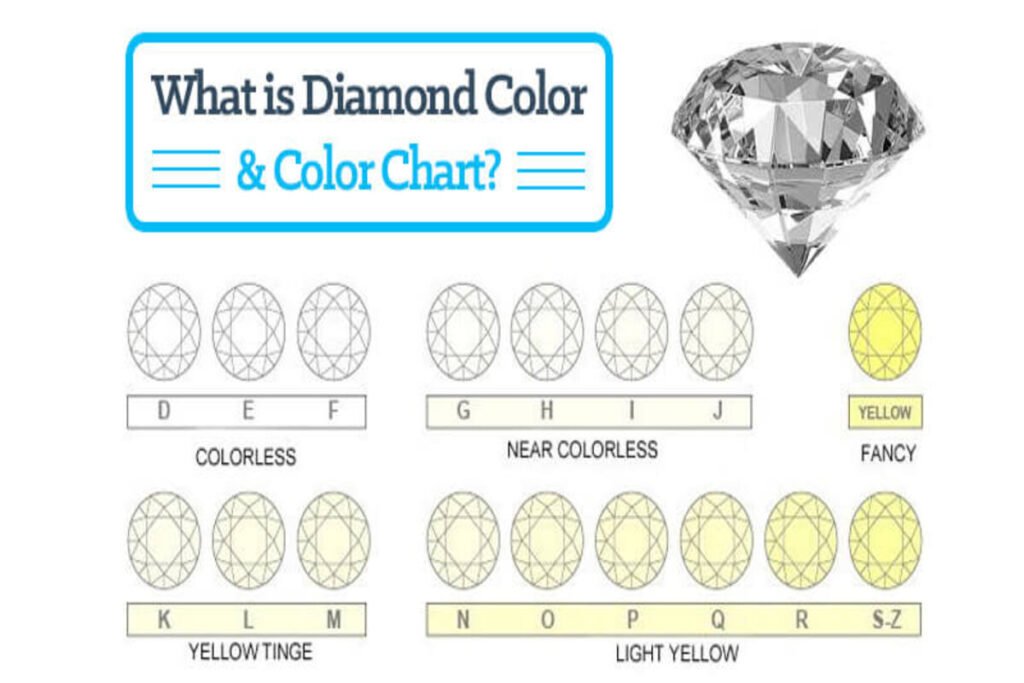
Faint Tint and Very Light Tint
Faintly tinted diamonds tend to appear rather warm to the eyes. This is due to the yellow undertones that are noticeable to the eyes. For couples with budget constraints, yellow stones can be a compromise for price and aesthetics.
Note that not all diamonds that are tinged with a yellow tone are already considered low-grade. Remember, other factors can affect the overall look of the ring. If you are trying to create the perfect engagement ring by choosing separate parts, don’t disregard faintly tinted just yet.
Everything else from N to Z grade has a very noticeable yellow color. Sometimes, the diamonds can appear almost brownish in tone. Again, the aesthetics of these diamond may be dependent on the wearer and how one may create the engagement ring of their choice.
Choosing Diamond Colors By Grading
Knowing the grade of the diamond is just the first step. The next step requires a bit of know-how so you can make the most out of your budget and get the best diamond ring for you or your partner.
What is the best color for diamonds?
This question may seem like a no-brainer. Who would like anything else other than a flawless and colorless diamond?
Other factors may affect this decision, the biggest being budget. For some couples, the flawlessness may not even be an appealing aspect of the diamond. Slightly tinged diamonds, especially those that are properly combined with the most apt setting, can either become one grade level higher or create a unique combination that does not need flawlessness as a requirement.
Tap a jeweler you trust, because they may be able to source out the most affordable price for a near-high grade diamond.
Know the technical vs the aesthetic difference
The difference between D to F grade diamonds may be visible only to the professional eye. In other words, if you are a jewelry wearer but not an enthusiast who is amassing a collection of near-colorless to colorless diamonds, going for the lowest grade of the three, can be the wisest option.
Think of other points that will affect your decision. Aesthetics may be the most weighty of all decision points. But if you are caught between two princess cut diamonds, with a D or an F grade and the same setting, going for the F grade is perfectly acceptable. Put your savings towards the wedding planning or even another purchase.
Choosing diamonds of the same grade for one setting
A common style for engagement rings includes a center stone with multiple side stones. Some prefer having colored stones beside a bigger diamond. Others may prefer to put in a row of diamonds, with a bigger center stone.
If your budget cannot accommodate multiple high-grade diamonds, opt for more affordable diamonds of the same grade.
Factors That Affect Diamond Color
Diamond color is just one part of choosing a good rock. Even when get the best high-grade option in the market, certain factors can influence how it will end set in an engagement ring.
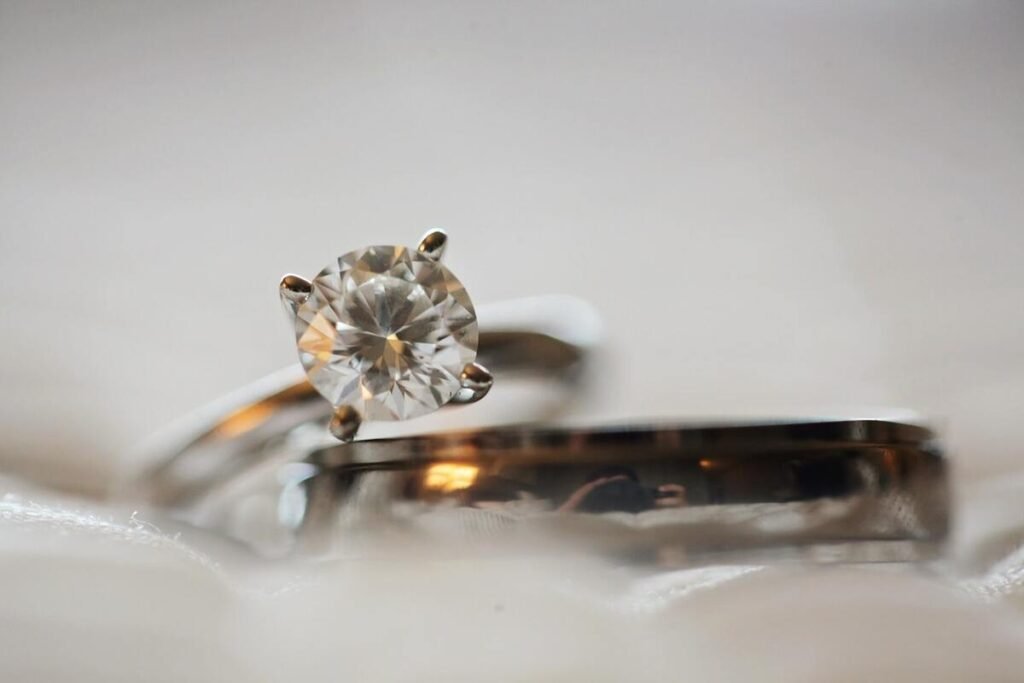
Size
You’d think that size will matter to a diamond—the bigger the size, the more precious it appears on one’s ring finger. If you are considering colors and appearance, having a bigger carat diamond can actually backfire on you.
According to Beyond 4Cs, colored diamonds that have both an I-grade can have very different color appearances when they differ in size. Larger diamonds can trap color more than the smaller-sized stones.
If you want a colorless diamond with a bigger carat, you may want to go a few grades higher up the premium grade spectrum. This way, the only color that will be trapped in it is its icy clear appearance.
Cuts
Some cuts can make a diamond sparkle, whereas others follow a step cut that does not exude a certain brilliance. Don’t forget this crucial fact, especially if you are the type to prefer sparkly diamonds.
Emerald cuts may be beautifully set, but the stone itself is a step cut. This dulls the brilliance, imitating more a hall of mirrors side by side, rather than brilliant sparkles on the stone’s facet.
On the other hand, there is also a poorly cut diamond. Even with higher-grade varieties, a poor cut can leak light, giving a dull appearance to the stone. This can occur even with the Princess cut, which is known to be one of the more brilliant options.
Clarity
Clarity refers to the flawlessness of a diamond. It has its own grading system, with flawless or internally flawless, having no inclusions and only fine surface blemishes seen under magnification.
The lowest grade for clarity is I1, I2, or I3, which are deemed as Included diamonds. These types will likely have low clarity and obvious inclusions when viewed in a clear room.
Note that lower clarity diamonds tend to have less durability. If you had to weigh between a colorless diamond and one that has very few inclusions, it might be best to go with the latter choice.
Side Stones
If you want an engagement ring that features a side stone setting, plan out the entire ring before setting out on a hunt.
Side stones can either be clear diamonds or colored gemstones, depending on your taste. If you go with the latter, note that the color of the gemstones can reflect on the center diamond.
In some cases, your chosen metal for the ring’s setting may affect the color of the side stones. Depending on the overall effect that you want to achieve, you can choose less colorless diamonds if the setting is meant to give it a softer yellow hue.
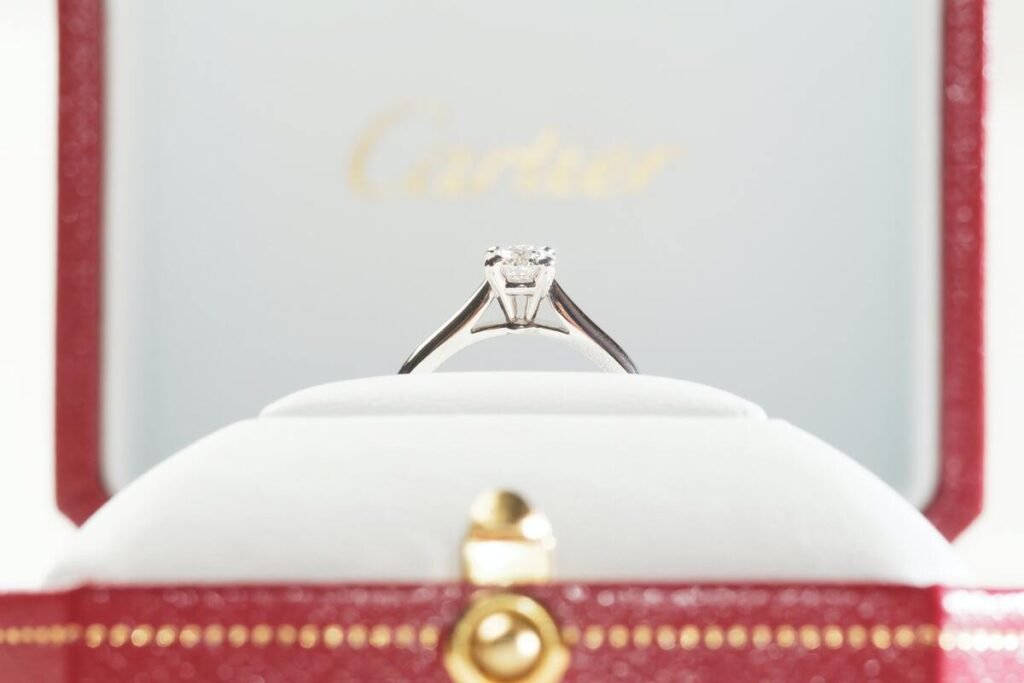
Tips On Buying And Choosing a Diamond Color
If you are on the fence when it comes to the most appropriate diamond color for your engagement ring, consider these questions when you start your hunt.
Remember, it’s all about how you wear your ring and what your tastes are that really matter!
Are you sensitive to diamond colors?
When referring to the diamond color scale chart, a lot of buyers assume that everyone can see the difference between a D and an F grade.
In many cases, non-professionals may not even tell the difference between an F and a G-grade diamond at first glance. If you are looking at a stone that is larger than one carat, choose a diamond that’s G or H in color grade. Anything smaller can be relegated to an I or J variant, as the color will not be as striking or noticeable.
What setting will you use?
Settings can also add-on or enhance the ring. Certain setting styles, such as the Tiffany or the prong setting, maximizes the light that can come into the diamond. This gives it a more sparkly shine, and if there are minimal inclusions, makes your diamond look clearer.
Choose a setting that will let more light through. If you are using side stones, pavé settings can actually make your center stone brighter. You can also make the stones appear clearer if you surround it with similar grade, delicate side stones.
What metal are you going to use?
Because diamonds can reflect the color of the metal setting, you need to be careful when mixing and matching stones and metals. For those who are not as worried about the color, gold and white gold remain the traditional metals used for engagement rings.
If you are more sensitive to color, take note of the color grade of your chosen diamonds. If you happen to have premium-color grades, don’t waste the icy clarity by putting it on a gold band. While this may be a traditional look, gold can reflect on the diamond. This adds faint tinges of color to an otherwise near colorless stone.
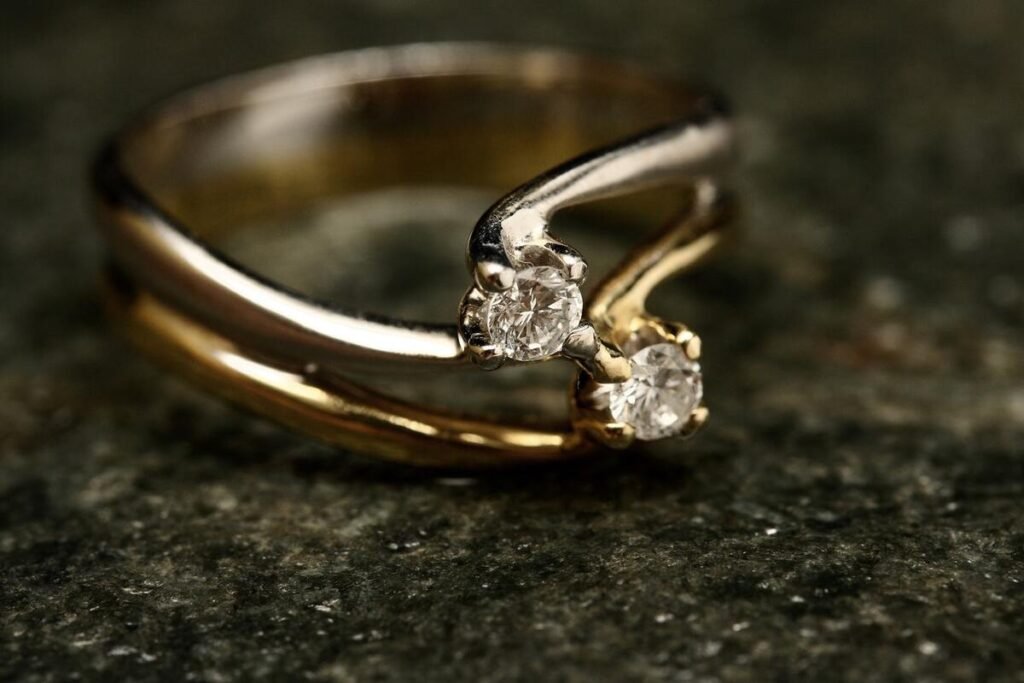
In the same way, if you have a G or H grade diamond, consider white gold or platinum as your engagement ring band.
Are you open to colored diamonds?
If you have ever asked, “What is the rarest color of diamond in the world?” you would be surprised to find that it’s not the flawless diamond. Diamonds also have actual colors that range from pinks to blues and even violets.
Contrary to common misconception, they are not the precious gemstones or birthstones either. Colored diamonds can come in a range of colors, from very faint to vivid hues.
Unless you are willing to shell out some serious budget on them, note that colored diamonds are the rarest types. Only hundreds of thousands exist, and only a handful of these are vividly colored or come in extremely rare colors.
If you ever want to try buying a colored diamond, go for more monotone hues like black and gray. These may be the most affordable options. Going up the scale of color rarity and vividness, expect the amount to add up to six figures, especially for the rarer colors blue, pink, violent, and red.
Lab-grown diamonds: Considering affordable options
Another way to get your hands on colored diamonds would be the lab-grown variety. The market now carries many of these, which sell for much lower than the price of a rare colored diamond.
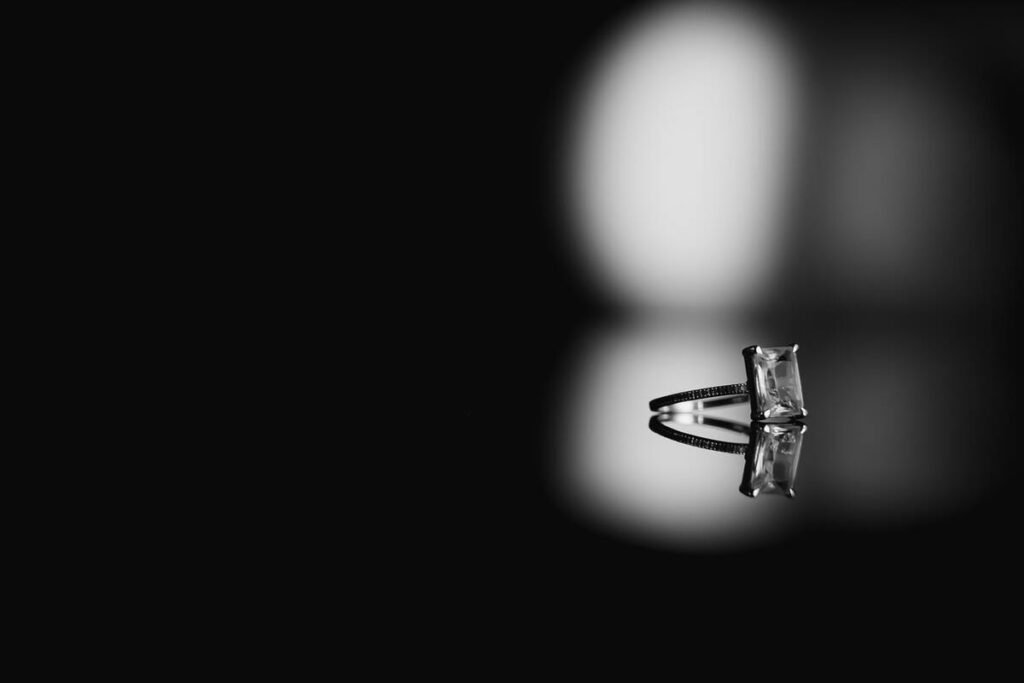
Be discerning about the colors of lab-grown diamonds. Be on the lookout for the color saturation and the uniformity of the color on the gem’s surface. The more even out they are, the better they would appear to the naked eye.
Lastly, always purchase from reputable gemological laboratories, so you can be sure of the process that the diamond goes through.
If you are looking at other diamond alternatives for your engagement ring, check out “The Other Stones: Top Five Diamond Alternatives That Don’t Break The Bank” to see some of the most popular options among brides-to-be.

